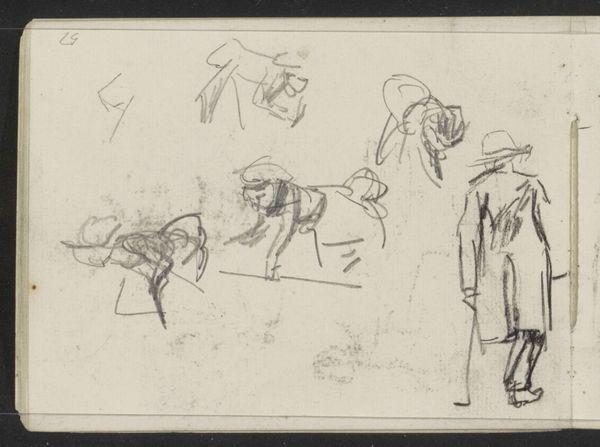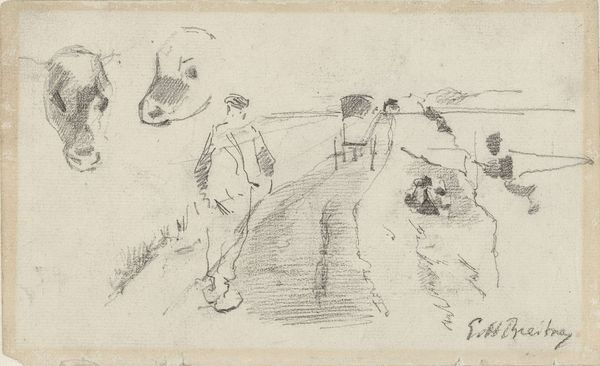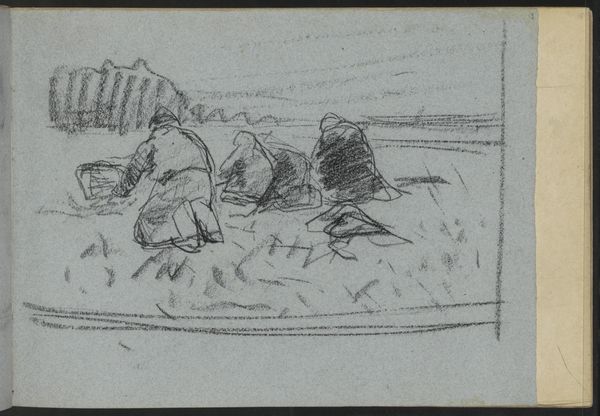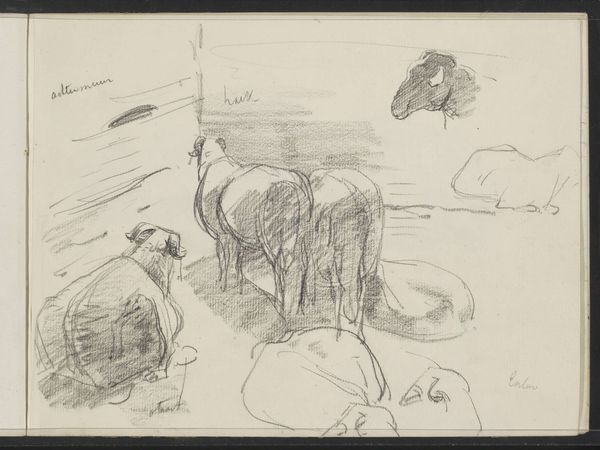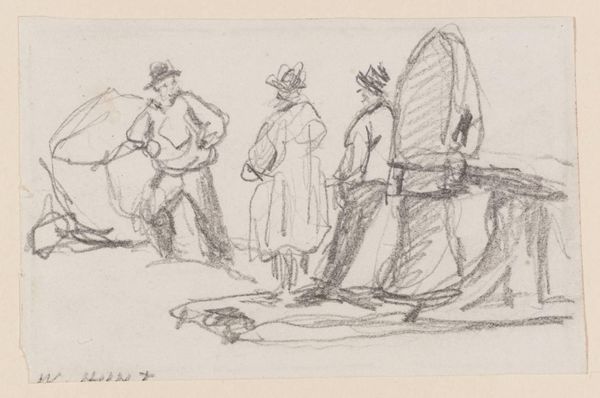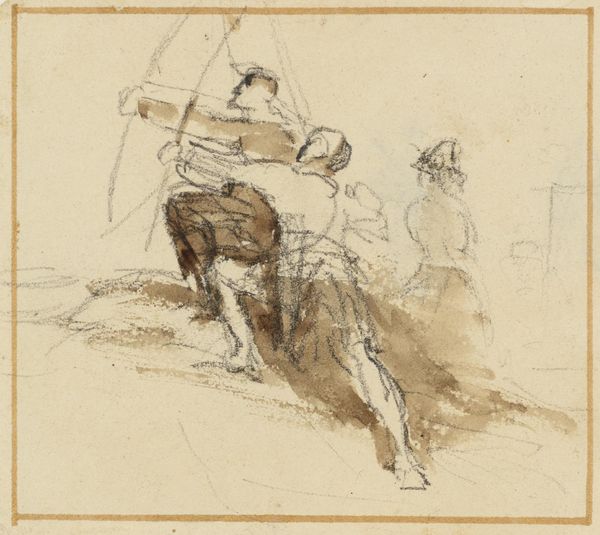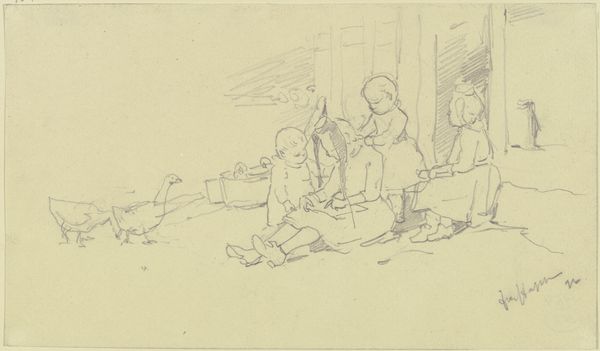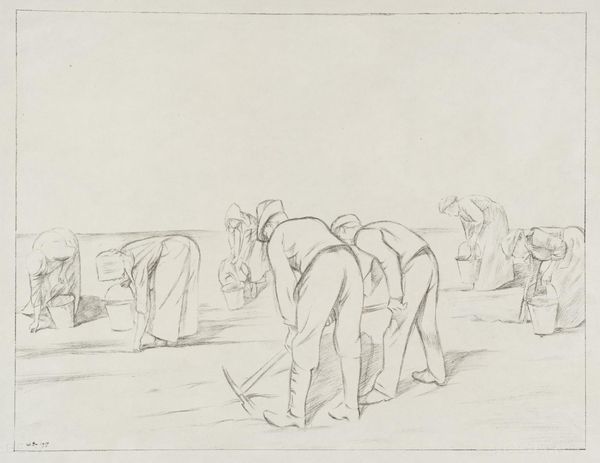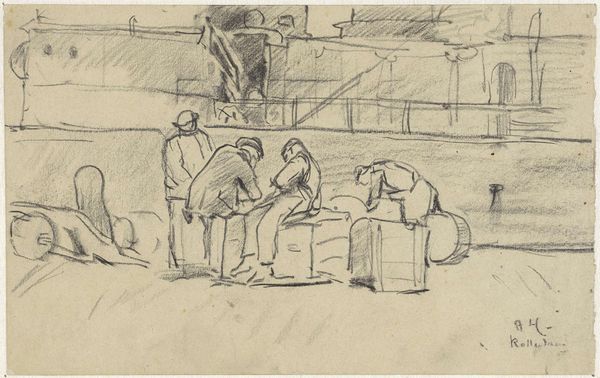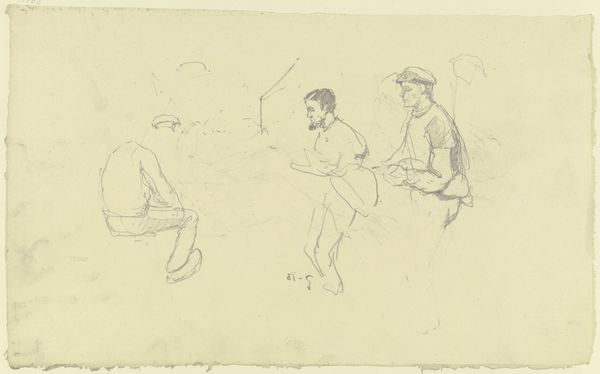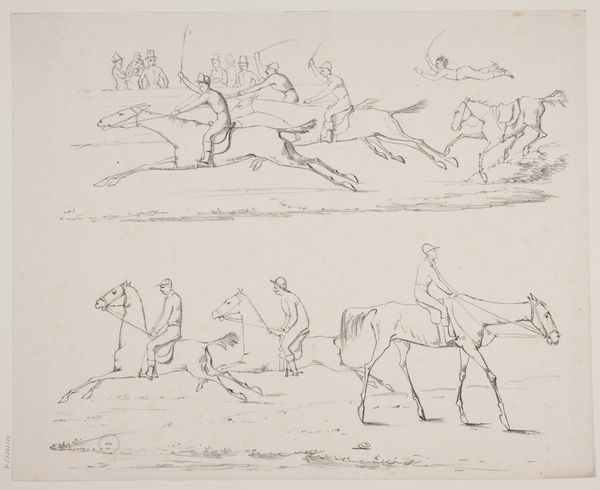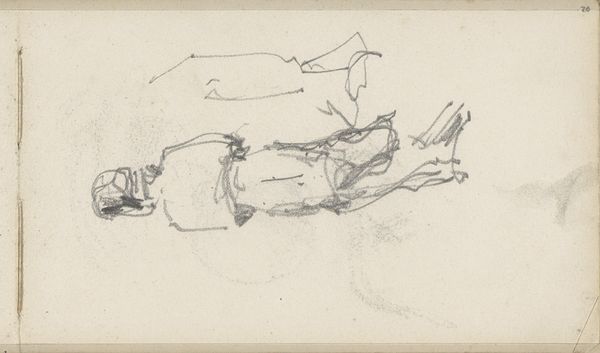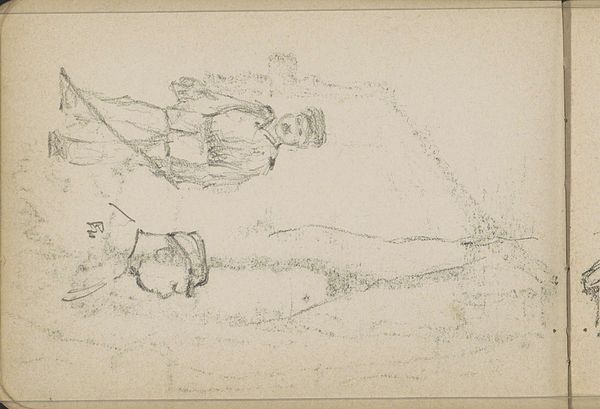
drawing, paper, pencil
#
drawing
#
dutch-golden-age
#
landscape
#
paper
#
pencil
#
genre-painting
#
realism
Dimensions: height 88 mm, width 140 mm
Copyright: Rijks Museum: Open Domain
Curator: Jan Toorop created this pencil drawing on paper, titled "Drie kinderen spelend op het strand van Zandvoort," or "Three Children Playing on the Beach of Zandvoort," in 1882. It now resides in the collection of the Rijksmuseum. Editor: The sparseness is striking. The tentative, light strokes against the stark white background create an airy, almost ethereal atmosphere. It feels very… unresolved, almost like a fleeting memory. Curator: Well, Zandvoort was evolving as a seaside resort destination in the late 19th century, attracting all sorts of tourists and locals to the beach. It's interesting to see how Toorop captured what would become a normalized form of leisure culture through his art. The choice to show children gives the image a feeling of innocence away from the rapidly changing dynamics of the era. Editor: Yes, but look how ambiguous the forms are. He isn’t really defining their features, just giving a sense of their interaction. Notice the negative space, the unarticulated sand… It gives an openness. I wonder about the formal decision to strip everything down like this. Is it purely representational, or is there something more abstract going on? Curator: The historical context suggests it’s probably both. He’s observing, sure, but he’s also presenting a viewpoint that's sensitive to modern aesthetics. Toorop belonged to a circle that valued avant-garde forms, which allowed the viewer to interpret it more intimately. Remember, Impressionism was also developing around this time, too, so this was not happening in isolation. Editor: And yet, his process really sets it apart, with very careful use of line work. You get such a sense of the breezy climate—how he captured such texture, even just from a preliminary sketch is quite telling. Curator: Exactly! This work reminds us that art isn't always about grand narratives. Sometimes it’s about capturing these simple, unscripted moments, which hold up mirrors to the culture in which they were produced. Editor: I agree completely. It really prompts a unique sensitivity towards those very fleeting instances in history and reminds us of the power within restraint.
Comments
No comments
Be the first to comment and join the conversation on the ultimate creative platform.
